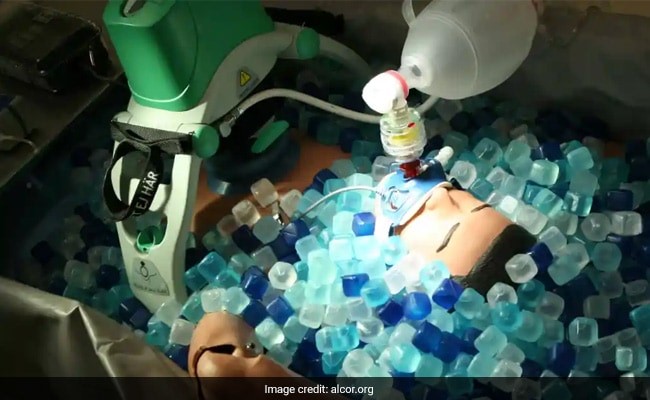Description

Source: NDTV
Disclaimer: Copyright infringement not intended.
Context
- Australian Cryonics firm freezes first client in hopes of bringing him back to life in future.
Details
- Cryonics is the practice of preserving individuals at extremely low temperatures with the hope that future medical advancements can restore them to life and health.
- It involves cooling legally dead bodies to liquid nitrogen temperatures to halt physical decay.
Key Concepts and Principles
- Legal Death: Cryonics can only be initiated after a person is declared legally dead, meaning their heart has stopped beating and there is no neurological activity.
- Cryopreservation Process:
- Stabilization:Begins immediately after legal death to maintain tissue viability.
- Cooling:The body is gradually cooled to just above freezing to prevent ice formation.
- Cryoprotectant Perfusion:Blood is replaced with cryoprotectants to prevent ice crystal formation.
- Vitrification:The body is cooled to -196°C in liquid nitrogen, turning biological tissues into a glass-like state without forming ice crystals.
Technical Aspects of Cryonics
- Cryoprotectants: Chemicals like glycerol and ethylene glycol used to protect biological tissues from ice damage during cooling.
- Vitrification: A process that cools the body so quickly that ice crystals do not form, avoiding cell and tissue damage.
- Cooling Rates: Controlled cooling rates are crucial to avoid thermal stress and damage.
- Storage: Long-term storage in liquid nitrogen at -196°C in specially designed cryostats.
Ethical Considerations
- Consent: Individuals must provide informed consent prior to death for cryonic preservation.
- Ethical Debates: Concerns about identity and continuity, the potential for future resuscitation, and resource allocation.
|
PRACTICE QUESTION
Q. While Cryonics offers the hope of future revival for those preserved, significant scientific, legal, and ethical hurdles must be overcome. Examine. (250 Words)
|











